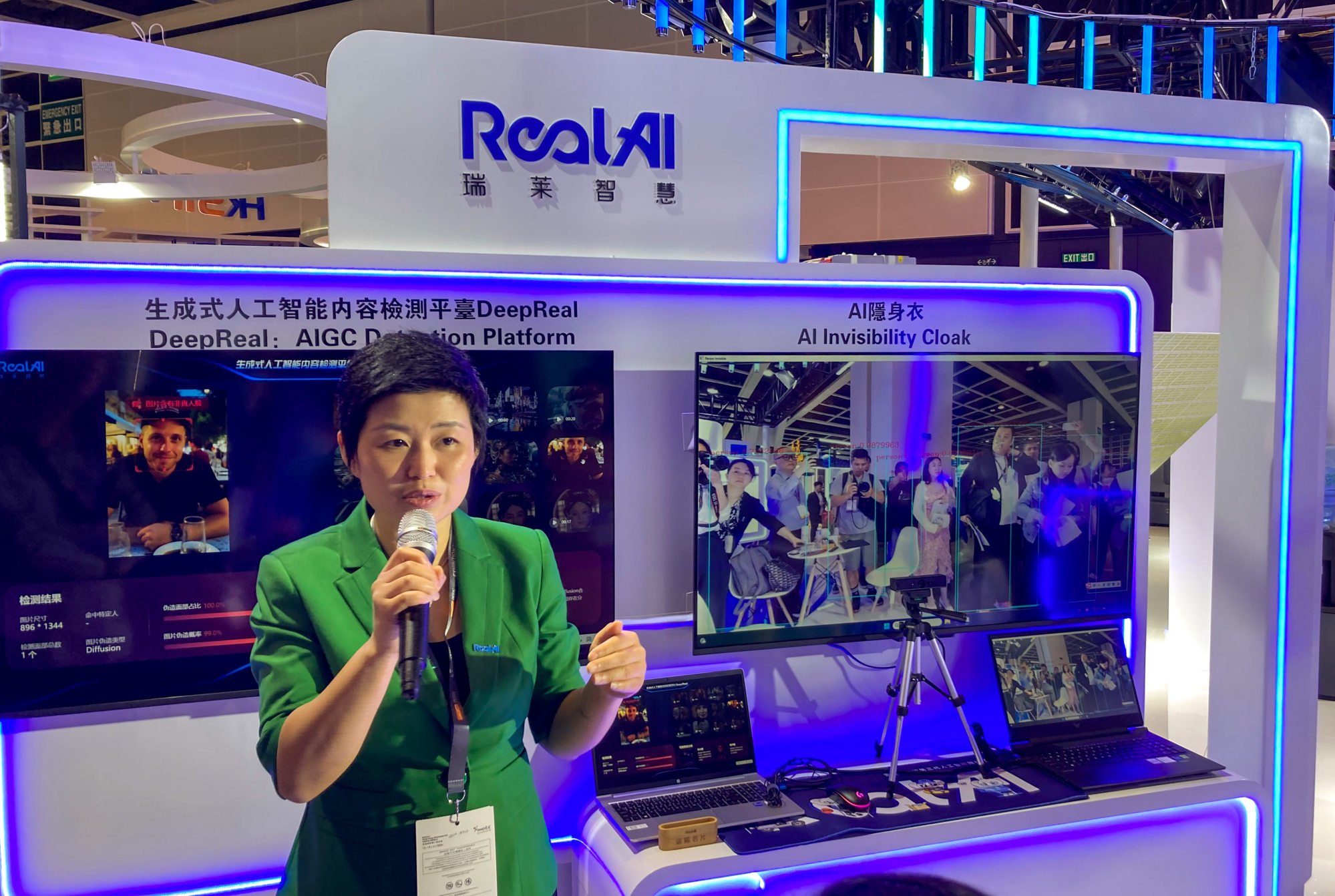
Generative AI takes centre stage at twin Hong Kong tech fairs, as government-backed research centre debuts
- InnoEX and the spring edition of the Hong Kong Electronics Fair bring together 3,000 exhibitors from 20 countries and regions
- The events feature Hong Kong’s first locally developed AI foundation model, a translation tool for sign language and other innovations
The government-backed Hong Kong Generative AI Research and Development Centre (HKGAI) made its debut at the twin events, which brought together 3,000 exhibitors from 20 countries and regions.
One of the projects on display was an AI-generated clip of the famous late Hong Kong singer Leslie Cheung Kwok-wing. Another was a chatbot being tested for tasks such as providing horse-racing information and government services.
The projects are based on the centre’s “independently trained” large language model, which supports both Chinese and English languages, according to the exhibitor.
It is Hong Kong’s first locally developed foundation model, signifying “a breakthrough in AI innovation”, said Guo Yike, Hong Kong University of Science and Technology provost and director of HKGAI.

Nearby at the Smart Hong Kong pavilion, the Office of the Government Chief Information Officer showed off a translation tool for hearing-impaired individuals, called Generative Sign Language.
Powered by machine learning and generative AI, the tool can detect the motions and facial expressions that make up sign language and translate them into spoken language in real time, and vice versa, according to the exhibitor.
The technology could benefit the 200,000 deaf people in Hong Kong, allowing them to access information in their native sign language, the exhibitor said.
RealAI Intelligent Technology, an exhibitor from Beijing, demonstrated RealGuard, a tool that can detect videos and images of human faces generated by AI for malicious intent, in real time. The technology has been used by industries such as government and financial services to verify the identities of individuals, RealAI said.

Themed “innovations for a smarter world”, the second edition of InnoEX – organised by the city’s Innovation, Technology and Industry Bureau and the Hong Kong Trade Development Council – featured 13 country and regional-themed pavilions, including those of Canada and India.
Mainland China was also well-represented with 20 pavilions from 16 provinces and cities.
“The scale of the exhibition is growing back to or even bigger than the pre-pandemic level,” said Miguel Johansen, an electronics buyer from Mexico who has attended the Electronics Fair for 14 years.
“I’ve seen many new options, such as drones, robots and other technology solutions,” he said, holding a cup of coffee freshly brewed by a machine equipped with a robotic arm.

